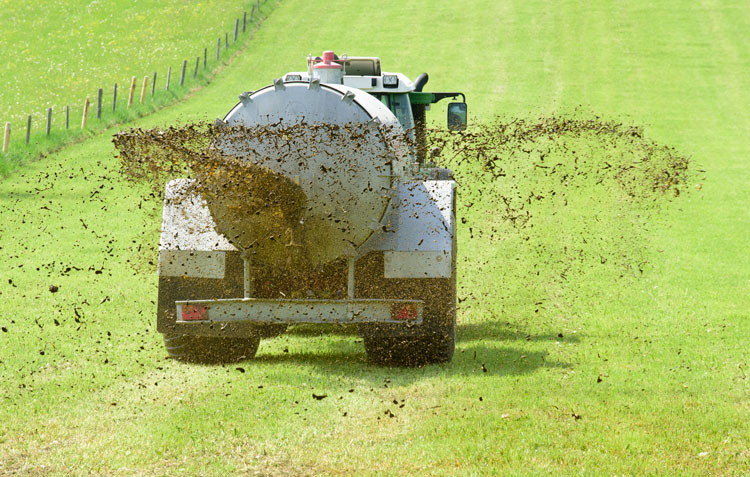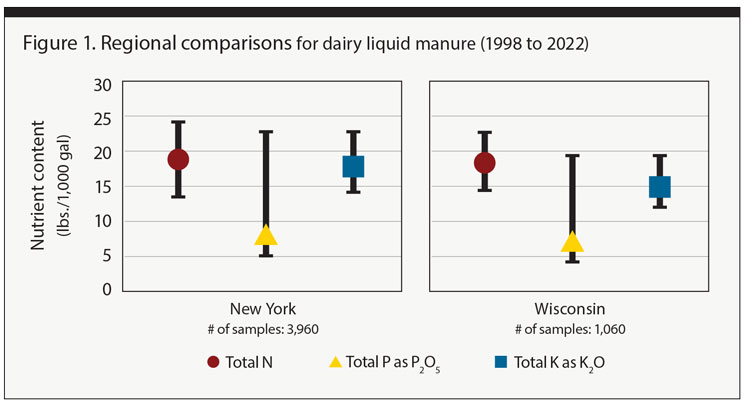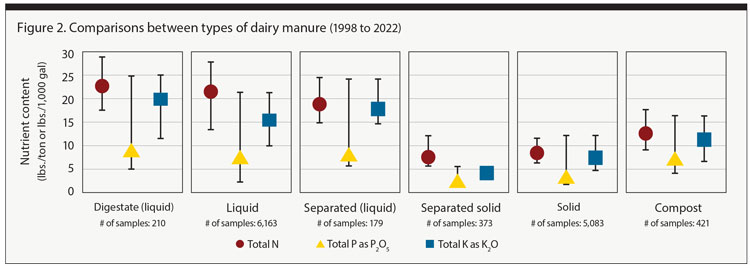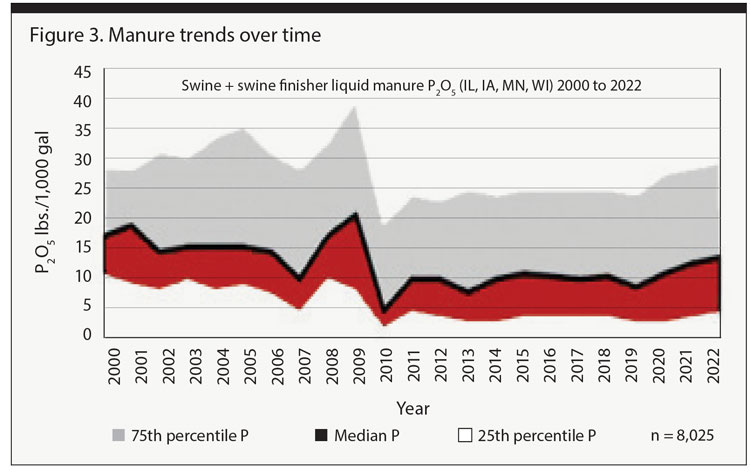
Manure is used as an organic fertilizer source on approximately 31 million acres across the country. That equates to 10% of U.S. cultivated land, according to the Conservation Effects Assessment Project (CEAP) II survey of practices from 2013 to 2016 estimates.
Manure book values — which are approximate nutrient concentrations — are used for developing manure management plans, designing manure storages, creating best management practices for manure land application, and agricultural modeling. They show a range of nutrient values that can be expected from typical manure storages and encourage farmers to test their manure often.
Unfortunately, current book values are several decades old and may not reflect current production practices. Recent laboratory data from the Midwest indicated manure nutrient data has changed compared to published Midwest Plan Service (MWPS) book values. Different animal diets, treatments, genetics, housing, and manure storage and handling practices can impact these manure nutrient values.
Getting up to date
Researchers at the University of Minnesota received Agriculture and Food Research Initiative (AFRI) National Institute of Food and Agriculture (NIFA) grant funding in 2020 to create a manure nutrient database in collaboration with the Minnesota Supercomputing Institute called ManureDB. It uses FAIR principles (findable, accessible, interoperable, and reusable). This project partners with laboratories and universities that analyze manure for business and/or research. A project team comprised of commercial manure laboratories, livestock commodity groups, regulatory and agency staff, agriculture professionals, researchers, engineers, and alternative energy groups guides the development process.

This project highly values data privacy. A data use agreement gets signed between the participating laboratory and the University of Minnesota. Laboratories can share past manure data and annual updates to grow the database. Data is provided without customer names or addresses to avoid privacy concerns. Only the state or first three digits of a zip code are entered into the database. The zip codes and laboratory identities will not be included in the public-facing database. At least five samples per year from a state or region will be needed to show up in public summaries.
As one can imagine, laboratories report their results in many ways, and coming up with a standardized template was a high priority. The database only requires the year the sample was analyzed but offers many other reporting options and sample notes. A manure type, animal or other amendment type, manure treatment, agitation status, bedding type, storage type, length of storage, and application method options can be selected if known.
The template offers a wide selection of analyte options from macronutrients, micronutrients, and other metals and ratios. The analytical method, units, and wet or dry basis are selected for each analyte reported. The project based the analytical method selections off of the recently updated Recommended Methods of Manure Analysis, Second Edition, the AgGateway Modus Agricultural Lab Test Data Standard, and interviews with laboratories.
A spreadsheet validation step ensures the data conforms to the template parameters prior to uploading to the database. Once uploaded, each sample is given a unique ManureDB identifier and conversion equations are used to display data in consistent units.
The public facing ManureDB database launched this summer at http://manuredb.umn.edu. New features and improvements continue to roll out. Sign up for the email list at z.umn.edu/ManureDB-signup for updates.
The database interface offers data aggregation with preliminary filters and provides some overview statistics. As of September 2023, ManureDB included 422,032 samples from 49 states, 13 laboratories, over 65 animal types, and 18 organic amendments. With other data use agreements signed and some pending, the database will continue to grow with additional datasets and annual data additions.

The team continues to refine and build features in ManureDB, with plans to add data visualization displays and offer a download option. Eventually a log-in feature will be available for laboratories to view their lab-specific data relative to the aggregated database.
The team plans to archive data on an annual basis in the USDA National Agricultural Library’s Ag Data Commons. We continue to seek out laboratory, university, and consultant data collaborators; if interested in learning more, please email manure@umn.edu.
Follow the steps
What are the steps to submit data?
- Contact manure@umn.edu or one of the project leaders.
- We can set up an initial meeting to learn more about your laboratory.
- We will send out the data use agreement for signatures.
- Once signed by the lab, University of Minnesota will sign and return the fully executed agreement.
- We can meet again to review the lab’s methods, analytes, and column names if needed.
- Send a spreadsheet of your lab’s data, as far back as you wish to go.
- We work through the spreadsheet validation process and may have a few questions for the lab as we go.
- The data will be imported.
While this manure database resource will give better manure nutrient estimates, the wide variability should also encourage farmers to test their manure more frequently. Regardless of fertilizer prices, utilizing manure nutrients where they get the most value is economically important.
Having a better idea and confidence in manure’s nutrient value will ensure crops get the required amount of nutrients for full economic optimum yield potential. It should reduce manure overapplication, which would lessen the environmental risk of nutrient loss. If plants cannot use all the nutrients applied, there is a greater probability of environmental contamination.
With many states working on nutrient reduction strategies for water quality improvements, knowing more about manure characteristics can improve those strategic plans. Animal feeding operation regulations could be improved with updated manure book values by having better estimates of how much land would be required for new animal feeding operation construction. A new barn location could be compared to available land for manure application to prevent overapplication in a specific area.

Knowledge of what are appropriate manure application rates for agronomic and environmental reasons can assist environmental regulators in farmer education and relevant nutrient management policy for their region. This database can also show improved estimates of other less studied manure components such as carbon and chloride.
Regional comparisons (Figure 1), comparisons between different manure types (Figure 2), and manure trends over time (Figure 3) are some examples of what can be done with this new data resource. With the largest manure dataset of its kind, this manure database is poised to be a valuable resource for understanding manure trends and variability into the future.
ACKNOWLEDGMENTS
The author would like to recognize the Minnesota ManureDB team of Melissa Wilson, Erin Cortus, Kevin Janni, and Kevin Silverstein, all from the University of Minnesota. The author would also like to thank Larry Gunderson, with the Pesticide and Fertilizer Management Division at the Minnesota Department of Agriculture, along with the ManureDB Stakeholder Committee and participating laboratories. This work is supported by the AFRI Foundational and Applied Science Program [grant no. 2020-67021-32465] from the USDA National Institute of Food and Agriculture, the University of Minnesota College of Food, Agricultural, and Natural Resource Sciences, and the Minnesota Supercomputing Institute.
This article appeared in the November 2023 issue of Journal of Nutrient Management on pages 18-20. Not a subscriber? Click to get the print magazine.




